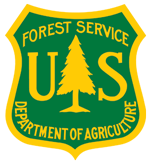-
 Combined climate and carbon-cycle effects of large-scale deforestation
Combined climate and carbon-cycle effects of large-scale deforestation
-
The prevention of deforestation and promotion of afforestation have often been cited as strategies to slow global warming. Deforestation releases CO2 to the atmosphere, which exerts a warming influence on Earth’s climate. However, biophysical effects of deforestation, which include changes in land surface albedo, evapotranspiration, and cloud cover also affect climate. Here we present results from several large-scale deforestation experiments performed with a three-dimensional coupled global carbon-cycle and climate model. These simulations were performed by using a fully three-dimensional model representing physical and biogeo- chemical interactions among land, atmosphere, and ocean. We find that global-scale deforestation has a net cooling influence on Earth’s climate, because the warming carbon-cycle effects of de- forestation are overwhelmed by the net cooling associated with changes in albedo and evapotranspiration. Latitude-specific deforestation experiments indicate that afforestation projects in the tropics would be clearly beneficial in mitigating global-scale warming, but would be counterproductive if implemented at high latitudes and would offer only marginal benefits in temperate regions. Although these results question the efficacy of mid- and high-latitude afforestation projects for climate mitigation, forests remain environmentally valuable resources for many reasons un-related to climate.
Located in
Resources
/
Climate Science Documents
-
 Conservation threats: biofuel
Conservation threats: biofuel
-
Biofuels: Europe’s largest conservation charity has launched a campaign to heighten the threat to wildlife habitats and biodiversity from plantations of fuel crops. Nigel Williams reports. 1st paragraph: Europe embraced the theoretical potential that biofuels might offer both in terms of climate change and renewable sources of energy, as enthusiastically as anywhere else, but the dawning reality has hit harder here than in many other areas with the realisation that it is a crowded continent with limited scope for home-grown material.
Located in
Resources
/
Climate Science Documents
-
 Continuous flux of dissolved black carbon from a vanished tropical forest biome
Continuous flux of dissolved black carbon from a vanished tropical forest biome
-
Humans have used fire extensively as a tool to shape Earth’s vegetation. The slash-and-burn destruction of Brazil’s Atlantic forest, which once covered over 1.3 million km2 of present-day Brazil and was one of the largest tropical forest biomes on Earth1, is a prime example. Here, we estimate the amount of black carbon generated by the burning of the Atlantic forest, using historical records of land cover, satellite data and black carbon conversion ratios. We estimate that before 1973, destruction of the Atlantic forest generated 200–500 million tons of black carbon. We then estimate the amount of black carbon exported from this relict forest between 1997 and 2008, using measurements of polycyclic aromatic black carbon collected from a large river draining the region, and a continuous record of river discharge. We show that dissolved black carbon (DBC) continues to be mobilized from the watershed each year in the rainy season, despite the fact that widespread forest burning ceased in 1973. We estimate that the river exports 2,700 tons of DBC to the ocean each year. Scaling our findings up, we estimate that 50,000–70,000 tons of DBC are exported from the former forest each year. We suggest that an increase in black carbon production on land could increase the size of the refractory pool of dissolved organic carbon in the deep ocean.
Located in
Resources
/
Climate Science Documents
-
 Domesticated Nature: Shaping Landscapes and Ecosystems for Human Welfare
Domesticated Nature: Shaping Landscapes and Ecosystems for Human Welfare
-
Like all species, humans have exercised their impulse to perpetuate and propagate themselves. In doing so, we have domesticated landscapes and ecosystems in ways that enhance our food supplies, reduce exposure to predators and natural dangers, and promote commerce. On average, the net benefits to humankind of domesticated nature have been positive. We have, of course, made mistakes, causing unforeseen changes in ecosystem attributes, while leaving few, if any, truly wild places on Earth. Going into the future, scientists can help humanity to domesticate nature more wisely by quantifying the tradeoffs among ecosystem services, such as how increasing the provision of one service may decrease ecosystem resilience and the provision of other services.
Located in
Resources
/
Climate Science Documents
-
 Ecological extinction and evolution in the brave new ocean
Ecological extinction and evolution in the brave new ocean
-
The great mass extinctions of the fossil record were a major creative force that provided entirely new kinds of opportunities for the subsequent explosive evolution and diversification of surviving clades. Today, the synergistic effects of human impacts are laying the groundwork for a comparably great Anthropocene mass extinction in the oceans with unknown ecological and evolutionary consequences. Synergistic effects of habitat destruction, overfishing, introduced species, warming, acidification, toxins, and massive runoff of nutrients are transforming once complex ecosystems like coral reefs and kelp forests into monotonous level bottoms, transforming clear and productive coastal seas into anoxic dead zones, and transforming complex food webs topped by big animals into simplified, microbially dominated ecosystems with boom and bust cycles of toxic dinoflagel- late blooms, jellyfish, and disease. Rates of change are increasingly fast and nonlinear with sudden phase shifts to novel alternative community states. We can only guess at the kinds of organisms that will benefit from this mayhem that is radically altering the selective seascape far beyond the consequences of fishing or warming alone. The prospects are especially bleak for animals and plants compared with metabolically flexible microbes and algae. Halting and ultimately reversing these trends will require rapid and fundamental changes in fisheries, agricultural practice, and the emissions of green- house gases on a global scale.
Located in
Resources
/
Climate Science Documents
-
 Ecosystem Disturbance, Carbon, and Climate
Ecosystem Disturbance, Carbon, and Climate
-
Models of climate change effects should incorporate land-use changes and episodic disturbances such as fires and insect epidemics.
Located in
Resources
/
Climate Science Documents
-
 Effects of Management on Carbon Sequestration in Forest Biomass in Southeast Alaska
Effects of Management on Carbon Sequestration in Forest Biomass in Southeast Alaska
-
The Tongass National Forest (Tongass) is the largest national forest and largest area of old-growth forest in the United States. Spatial geographic informa- tion system data for the Tongass were combined with forest inventory data to estimate and map total carbon stock in the Tongass; the result was 2.8±0.5PgC,or8%of the total carbon in the forests of the conterminous USA and 0.25% of the carbon in global forest vegetation and soils. Cumulative net carbon loss from the Tongass due to management of the forest for the period 1900–95 was estimated at 6.4–17.2 Tg C. Using our spatially explicit data for carbon stock and net flux, we modeled the potential effect of five management regimes on future net carbon flux. Estimates of net carbon flux were sensitive to projections of the rate of carbon accumulation in second-growth forests and to the amount of carbon left in standing biomass after harvest. Projections of net carbon flux in the Tongass range from 0.33 Tg C annual sequestration to 2.3 Tg C annual emission for the period 1995–2095. For the period 1995–2195, net flux estimates range from 0.19 Tg C annual sequestra- tion to 1.6 Tg C annual emission. If all timber harvesting in the Tongass were halted from 1995 to 2095, the economic value of the net carbon sequestered during the 100-year hiatus, assuming $20/Mg C, would be $4 to $7 million/y (1995 US dollars). If a prohibition on logging were extended to 2195, the annual economic value of the carbon sequestered would be largely unaffected ($3 to $6 million/y). The potential annual economic value of carbon sequestration with management maxi- mizing carbon storage in the Tongass is comparable to revenue from annual timber sales historically authorized for the forest.
Key words: carbon sequestration; geographic information system; climate change; forest management; Alaska.
Located in
Resources
/
Climate Science Documents
-
 Effects of Urbanization and Climate Change on Stream Health
Effects of Urbanization and Climate Change on Stream Health
-
Estimation of stream health involves the analysis of changes in aquatic species, riparian vegetation, microinvertebrates, and channel degradation due to hydrologic changes occurring from anthropogenic activities. In this study, we quantified stream health changes arising from urbanization and climate change using a combination of the widely accepted Indicators of Hydrologic Alteration (IHA) and Dundee Hydrologic Regime Assessment Method (DHRAM) on a rapidly urbanized watershed in the Dallas-Fort Worth metropolitan area in Texas. Historical flow data were split into pre-alteration and post-alteration periods. The influence of climate change on stream health was analyzed by dividing the precipitation data into three groups of dry, average, and wet conditions based on recorded annual precipitation. Hydrologic indicators were evaluated for all three of the climate scenarios to estimate the stream health changes brought about by climate change. The effect of urbanization on stream health was analyzed for a specific subwatershed where urbanization occurred dramatically but no stream flow data were available using the widely used watershed-scale Soil and Water Assessment Tool (SWAT) model. The results of this study identify negative impacts to stream health with increasing urbanization and indicate that dry weather has more impact on stream health than wet weather. The IHA-DHRAM approach and SWAT model prove to be useful tools to estimate stream health at the watershed scale.
Located in
Resources
/
Climate Science Documents
-
 Emerging Techniques for Soil Carbon measurements
Emerging Techniques for Soil Carbon measurements
-
Soil carbon sequestration is one approach to mitigate greenhouse gases. However, to reliably
assess the quantities sequestered as well as the chemical structure of the soil carbon, new
methods and equipment are needed. These methods and equipment must allow large scale
measurements and the construction of dynamic maps. This paper presents results from some
emerging techniques to measure carbon quantity and stability. Each methodology has specific
capabilities and their combined use along with other analytical tools will improve soil organic
matter research. New opportunities arise with the development and application of portable
equipment, based on spectroscopic methods, as laser-induced fluorescence, laser-induced
breakdown spectroscopy and near infrared, for in situ carbon measurements in different
ecosystems. These apparatus could provide faster and lower cost field analyses thus
improving soil carbon contents and quality databases. Improved databases are essential to
model carbon balance, thus reducing the uncertainties generated through the extrapolation of
limited data.
Located in
Resources
/
Climate Science Documents
-
 Extreme contagion in global habitat clearance
Extreme contagion in global habitat clearance
-
Habitat clearance remains the major cause of biodiversity loss, with consequences for ecosystem services and for people. In response to this, many global conservation schemes direct funds to regions with high rates of recent habitat destruction, though some also emphasize the conservation of remaining large tracts of intact habitat. If the pattern of habitat clearance is highly contagious, the latter approach will help prevent destructive processes gaining a foothold in areas of contiguous intact habitat. Here, we test the strength of spatial contagion in the pattern of habitat clearance. Using a global dataset of land-cover change at 50 50 km resolution, we discover that intact habitat areas in grid cells are refractory to clearance only when all neighbouring cells are also intact. The likelihood of loss increases dramatically as soon as habitat is cleared in just one neighbouring cell, and remains high thereafter. This effect is consistent for forests and grassland, across biogeographic realms and over centuries, constituting a coherent global pattern. Our results show that landscapes become vulnerable to wholesale clearance as soon as threatening processes begin to penetrate, so actions to prevent any incursions into large, intact blocks of natural habitat are key to their long-term persistence.
Keywords: habitat loss; global change biology; conservation; wilderness
Located in
Resources
/
Climate Science Documents























